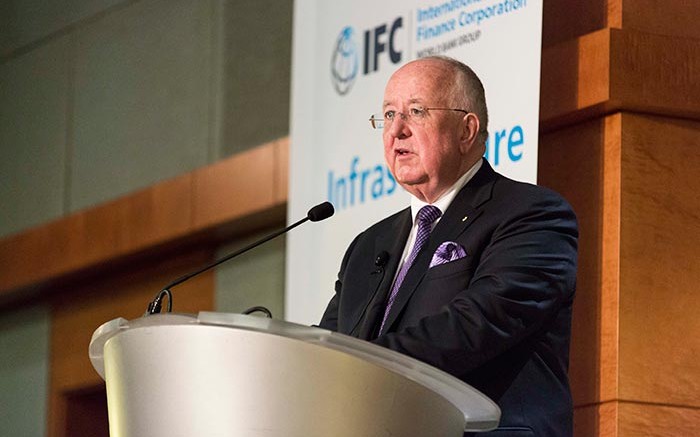VANCOUVER — It’s been a delicate balancing act for miners over the past few years trying to return money to shareholders while keeping a consistent growth profile.
Of course, one of the key ways to attract and maintain shareholder bases in light of dwindling global interest rates are reliable dividends, which are popular among large, diversified commodity producers.
Before the 2008 global recession, many miners instituted shareholder payback initiatives, and these companies are striving to maintain them in the face of falling commodity prices and rising production costs.
Over the past two years, it’s been especially tricky for commodity producers in terms of competition from other sectors, as global dividend incomes have been on the rise.
According to U.K.-based Henderson Global Investors, overall cash payouts of US$1.2 trillion last year marked a record high. Meanwhile, mining dividends experienced a third consecutive year of declines and the sector was the worst global performer in 2014.
Heading into 2015, it seems that many larger producers will continue to favour cutting capital expenditure and exploration costs in a bid to underpin balance sheets and retain healthy dividends. For example, Rio Tinto (NYSE: RIO; LSE: RIO) recently boosted its ordinary dividend by 12% to US$2.15 per share, and delivered a US$2-billion share buyback.
The company estimates that it has achieved US$3.6 billion in pre-tax operating cash-cost savings over the past three years. Rio’s target for 2015 is another US$750 million in savings.
Meanwhile BHP Billiton (NYSE: BHP; LSE: BLT) has salvaged its annual US$1.21-per-share dividend, which translates to a relatively competitive 5.3% yield. Like other industry players, however, BHP will likely need to dip into debt markets to service a US$6.5-billion dividend load.
The company’s net debt is expected to peak at US$33 billion by the end of 2016, though BMO Capital Markets notes that the “balance sheet remains manageable,” adding that “squeezing of margins within the petroleum division has considerably reduced the likelihood of additional cash returns to shareholders.”
Anglo American (US-OTC: AAUKY; LSE: AAL) is also attempting to solidify its shareholder payback initiatives despite balance sheet pressure. The company has committed to an US85¢-per-share annual dividend, with US$12.9 billion in debt and US$4.4 billion in pre-tax writeoffs relating to its Minas Rio iron ore project and Peace River metallurgical coal assets.
In early February, Brazil’s Vale (NYSE: VALE) proposed a US$2-billion minimum dividend payment for 2015, which would be down from the US$4.2 billion the company returned to shareholders last year.
Vale is in a tough spot due to its exposure to the battered iron ore subsector, with the company in the midst of a US$20-billion expansion at its Carajas iron ore operation in the Amazon.
As for North American majors, Teck Resources (TSX: TCK.B; NYSE: TCK) is also likely facing tough decisions to keep its 90¢-per-share annual dividend. Teck’s earnings in 2015 look to be largely influenced by movements in met coal, copper and zinc prices. As such, the company could come under liquidity pressure if commodity markets don’t recover.
Teck has $1.8 billion in cash and a $3-billion undrawn credit facility, but is investing $1.8 billion in the Fort Hills oilsands joint venture with Suncor Energy (TSX: SU; NYSE: SU), and is scheduled to pay $518 million in dividends.
BMO Capital Markets notes that “Teck’s free cash flow in 2015 is forecast to be negative under [our base case scenario], as well as other scenarios examined. Therefore, unless there is a material improvement in commodity prices, it appears that Teck will have to decide whether the company is comfortable with increasing its debt levels this year to maintain its dividend.”
Similarly,U.S.-based Freeport-McMoRan (NYSE: FCX) appears to be heading into cost-cutting mode to keep its current dividend levels. The company pays a US$1.25 dividend annually, which equates to a 6.7% yield. Freeport has US$5.1 billion of total liquidity, but carries a US$19-billion debt load and has high leverage to copper and oil.
BMO analysts note that Freeport’s two-year cash burn would “exceed available liquidity based on current spending and dividend plans,” though the company has US$3 billion per year in “discretionary spending” that could be cut. BMO Research adds that it is “more realistic to expect dividend cuts along with capital expenditure cut, given the steep fall in copper.”
As for more single-commodity focussed miners, it’s even harder to find material payback for shareholders. Vancouver-based Goldcorp (TSX: G; NYSE: GG) has paid a dividend since 2003, and announced in January that it will maintain a rate of 5¢ per month. That equates to a 2.5% yield, which is one of the best in the gold space.
By comparison, Barrick Gold (TSX: ABX; NYSE: ABX) pays out just 1.7%, or 20¢ per share annually to investors, while Newmont Mining (NYSE: NEM) has slashed dividend payments from an annual high of US42.5¢ in 2013 to virtually zero at the end of last year.
There are a few diamonds in the rough, however — and in some unlikely places. Single-asset producer Nevsun Resources (TSX: NSU; NYSE-MKT: NSU) recently boosted its dividend rate for the fourth time in three years since hitting commercial production. The company holds a 60% operating interest in the Bisha gold-copper mine in Eritrea, and boasts a 3.8% yield with its quarterly dividend of US4¢ per share.
Canadian producer Dominion Diamond (TSX: DDC; NYSE: DDC) recently announced it would resume paying a dividend after releasing its year-end results in April. In its previous incarnations as Aber Diamond and Harry Winston Diamond, the company paid dividends from 2006 to 2009 when it traded on a 3% yield.
Dominion reported US$401 million in cash at the end of the third quarter. BMO Research says the company could pay a quarterly dividend of up to US25¢ per share and keep its current cash position.


Be the first to comment on "Majors fight to maintain dividends"